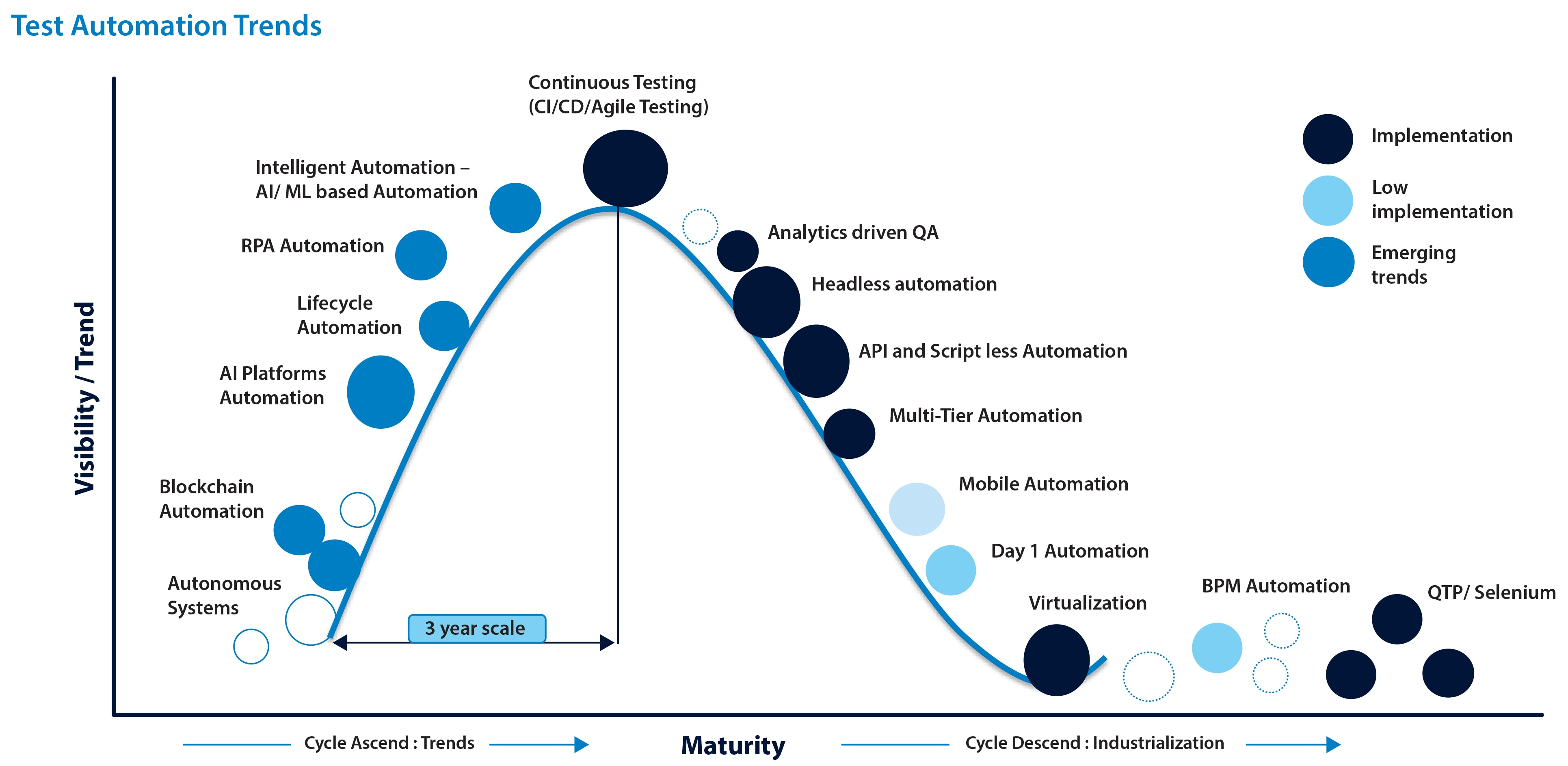AI/Automation
Leveraging AI in Quality Assurance
When it comes to digital transformation, most enterprises have a vision around customer experience, efficiency, agility and profitability that involves modernizing infrastructure, processes and applications. Quality assurance (QA) is often an afterthought.
However, every digital program invariably runs on the Agile development framework or on DevOps and translates to shorter release cycles with additional pressure to deliver quality code within much shorter timeframes. To help this, organizations plan for additional controls on the DevOps side and overlook the QA strategy. There is a need for change in the way quality assurance operates in organizations. Broadly there are two driving forces - agility in the way testing is done (continuous quality assurance) and faster time to market. For QA teams to keep pace with the agile mode of development, traditional test automation is no longer adequate, making AI in test automation inevitable.
Testing organizations are being compelled to innovate with new and emerging technology solutions around automation.
QA Automation for Better Business
Automation in quality assurance has existed for years. However, the benefits of automation were not impactful enough for the business to sit up and notice.
In the first generation of automation, the focus was largely UI-based and centered on regression. The goal was to build a framework that could accelerate automation using commercial tools. Automation evolved to include keyword-driven, data-driven and later, business process-driven frameworks that brought significant savings to clients. But the savings were limited largely to regression and did not make much difference to the business.
The next wave of automation included the functional side of business in the form of API / middleware automation, test data automation and more. This truly brought the value of automation into testing activities, particularly test executions. The focus moved from UI-based automation to multi-tier / multi-stack automation that made an impact on efficiency and time-to-market.
This wave of automation is evolving further with an increased focus on continuous testing. Test Driven Design (TDD) and Behavior Driven Design (BDD) are forcing integrated automation solutions to join the mainstream and are not limited to testers alone. Developers at unit test (UT) stage or businesses at the User Acceptance Test (UAT) stage are also using these automated scripts to test functionalities and save time. Testing has also expanded beyond black box (testing of functionality) to white box (testing the internal perspective of the system) resulting in better quality control of the code.
Automation in the test execution phase is further evolving with wide adoption of open source automation solutions, Agile and continuous testing, third party system integrations and solutions around digital / mobile testing.

Test Automation Trends
With the availability of business process models and reusable test assets, automation is also possible in the test planning stage. This not only improves productivity but also helps in uncovering new learnings and experiences beyond. The Infosys Business Assurance Store is one such large 1m+ test case repository helping clients leverage our past experience of working on similar scenarios.
Bringing AI into Quality Assurance
AI-led cognitive automation solutions (Intelligent Automation) combine the best of automation approaches with AI and help bring superior results. The focus is three dimensional – to eliminate test coverage overlaps, optimize efforts with more predictable testing and lastly to move from defect detection to defect prevention. Today, organizations have better machine learning algorithms for pattern analysis and processing huge volumes of data that result in better run-time decisions. For instance, during a software upgrade, machine learning algorithms can traverse the code to detect key changes in functionality and link them to the requirements in order to identify test cases. This helps optimize testing and prevents the making of decisions on hot spots that could lead to failure. Infosys PANDIT is one such AI-based testing platform that is helping our clients improve agility and predictability while optimizing efforts in testing by integrating AI in testing.
RPA & Robotics solutions (bots) are typically being used for various automation needs that go beyond traditional testing activities. Organizations are building robots as testers to execute testing on physical devices like ATM, mobile etc. These robots can be programmed and controlled from remote locations and reduce the need for co-location.
The future lies with solutions that will use deep learning fundamentals to build a true autonomous approach to testing. Like self-driving cars, autonomous technologies will help generate their own scripts for testing by learning through the system. Infosys Deep Assurance is an autonomous testing solution that brings the power of deep learning to QA. This path-breaking solution has the ability to self-learn and test applications without any documented test cases or human intervention, making it truly autonomous and intelligent.
We are pioneering a strategy that applies AI to QA beyond test optimization and prediction of failure to prevention through autonomous technologies. This approach would lead to a huge reduction in overall testing effort and also reduce dependency on humans. Its inbuilt intelligence and self-learning capabilities make it a superior solution for identifying critical paths for testing and for increasing testing accuracy.

The Autonomous Workflow
Typically, most large legacy enterprises have huge investments in their core IT systems that need a significant amount of testing. It is estimated that the cost of testing in a typical enterprise is to the tune of 14% to 22% of the total support cost. The challenge is to strike a balance between the level of spend on testing and failure incidence.
With Intelligent Automation solutions, organizations can reenergize their core and make every employee more productive in their day-to-day work driving optimal value and efficiency.




